Given a inhomogeneous cluster model, associated with a variable Z as an object of class 'im', how to convert the result of the number of mean points per cluster (Mean cluster size) in pixel image to the average number of individuals per cluster?
For example, in the inhomogeneous fitting cluster of Beilschmiedia data:
> fitBeiThom <- kppm(bei ~ elev + grad, "Thomas", data=bei.extra)
> fitBeiThom
Inhomogeneous cluster point process model
Fitted to point pattern dataset ‘bei’
Fitted by minimum contrast
Summary statistic: inhomogeneous K-function
Log intensity: ~elev + grad
Fitted trend coefficients:
(Intercept) elev grad
-8.56355220 0.02143995 5.84646680
Cluster model: Thomas process
Fitted cluster parameters:
kappa scale
5.021718e-05 2.737983e+01
Mean cluster size: [pixel image]
Cluster strength: phi = 2.114
Sibling probability: psib = 0.6789
In this context, what would be the exact value of the number of midpoints per cluster and how to obtain it?
